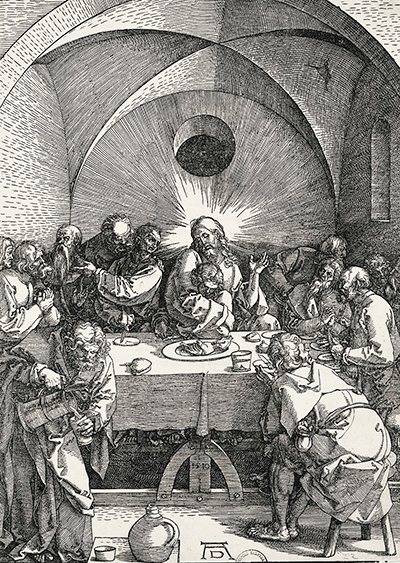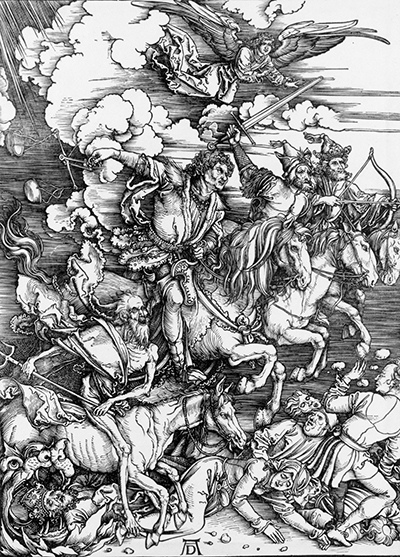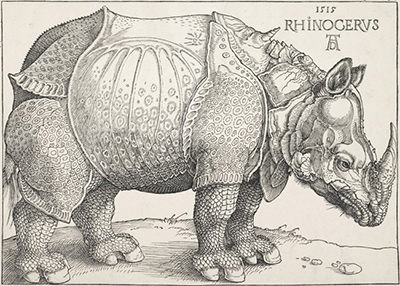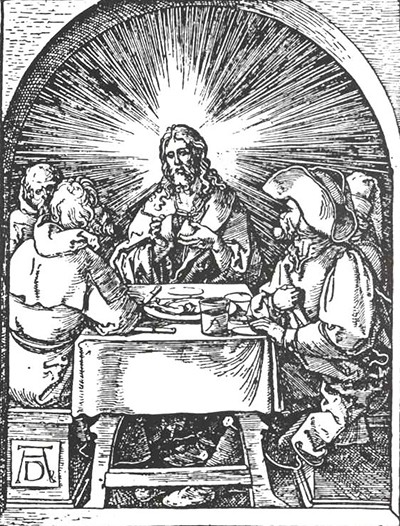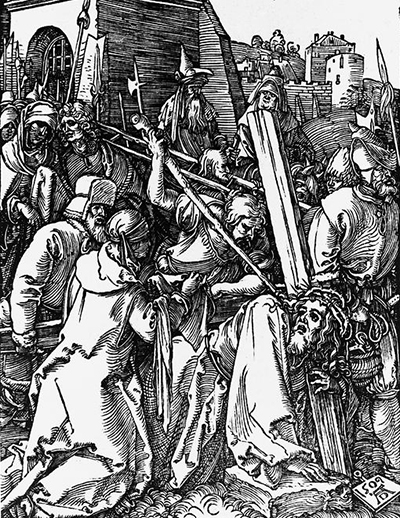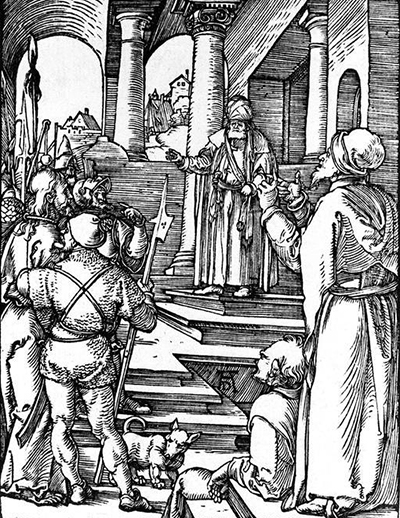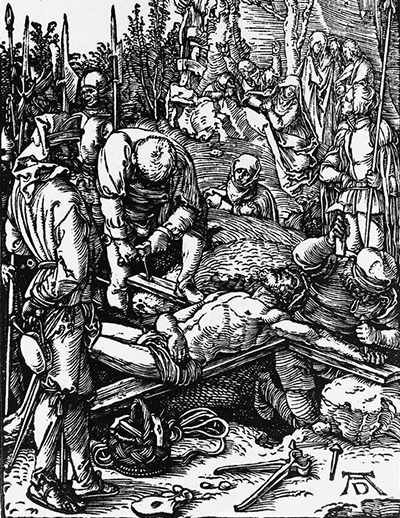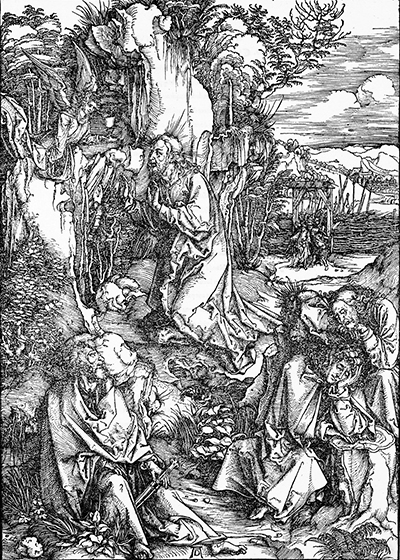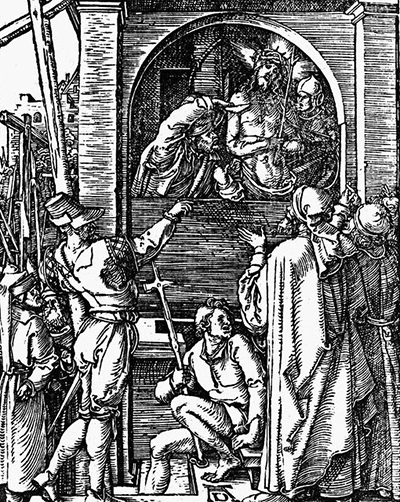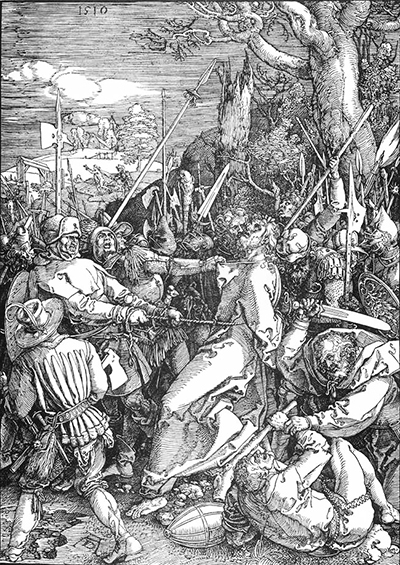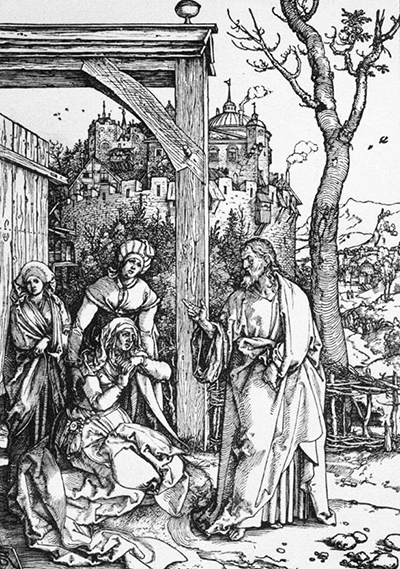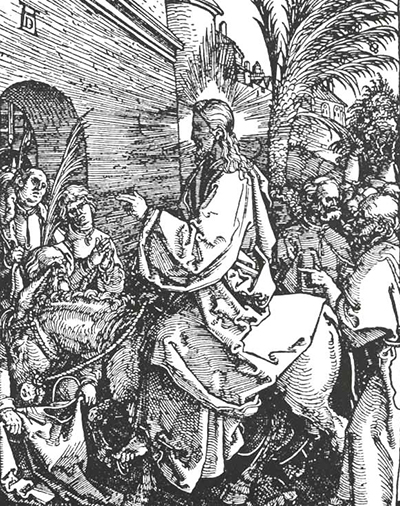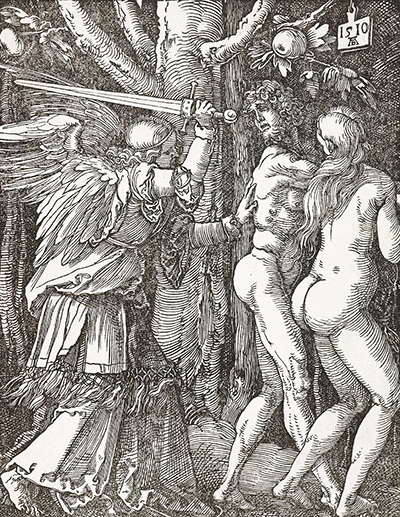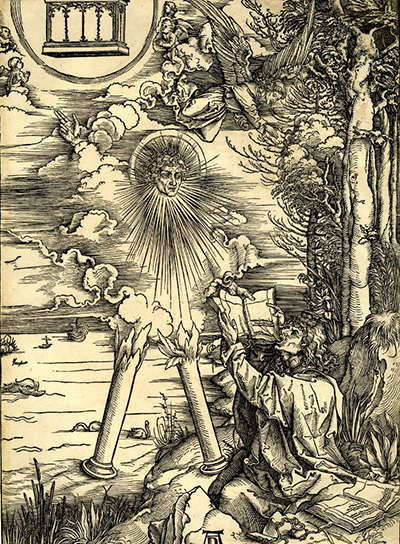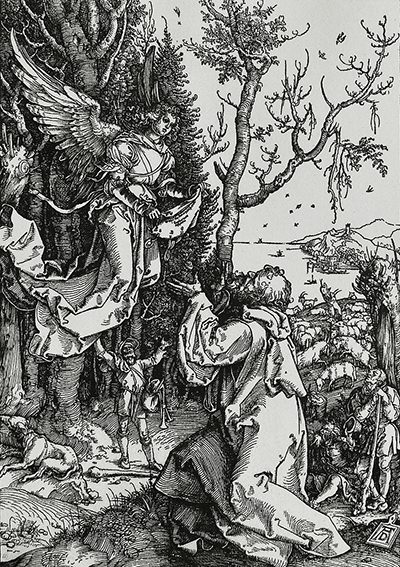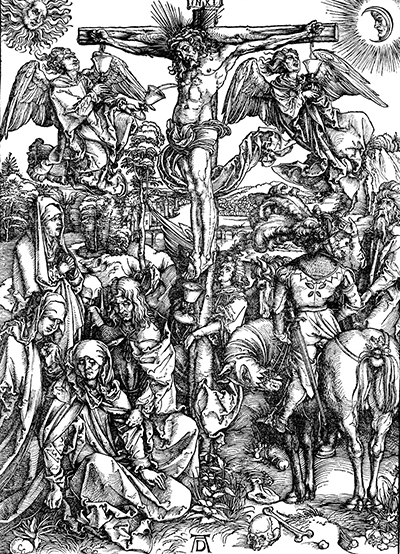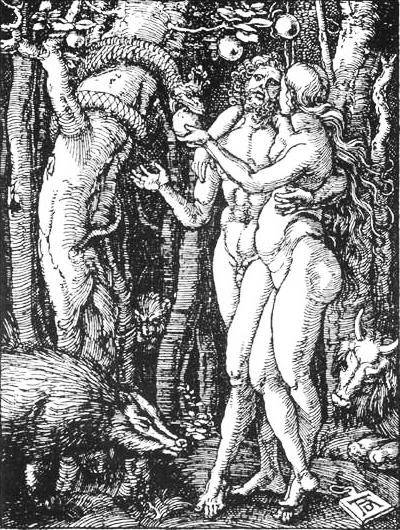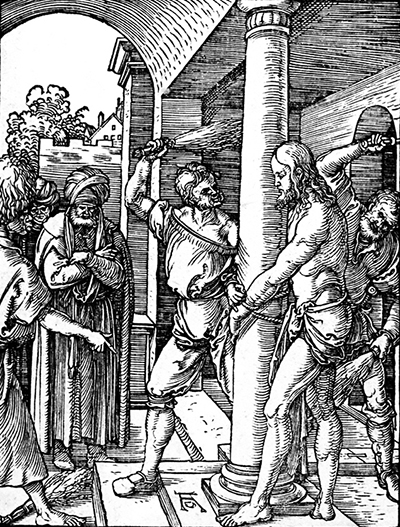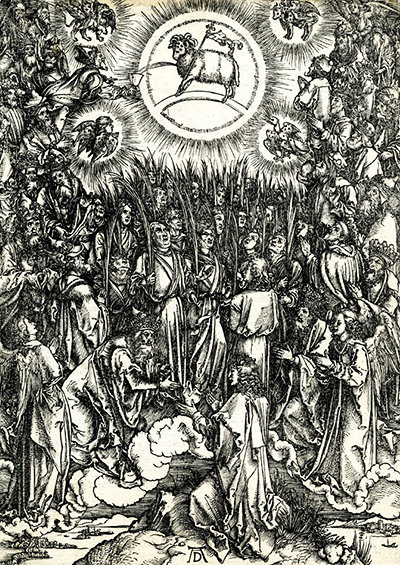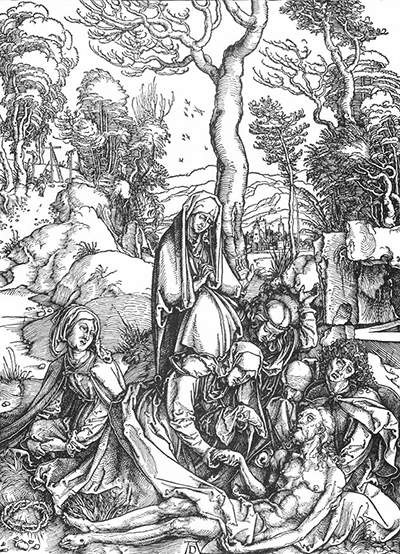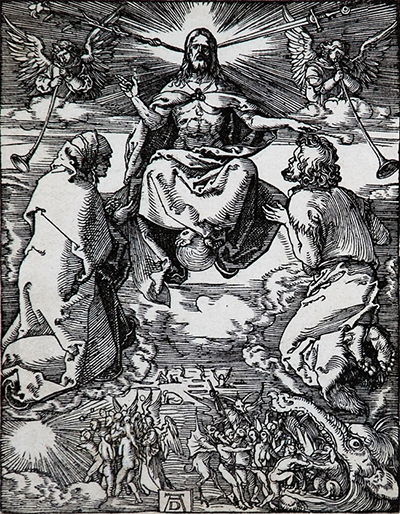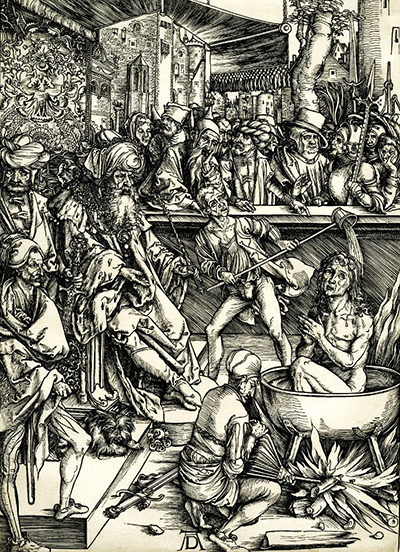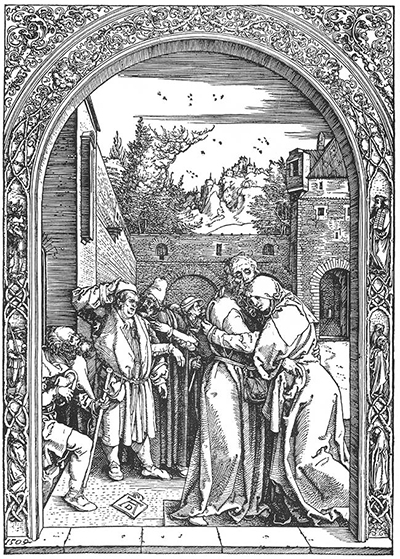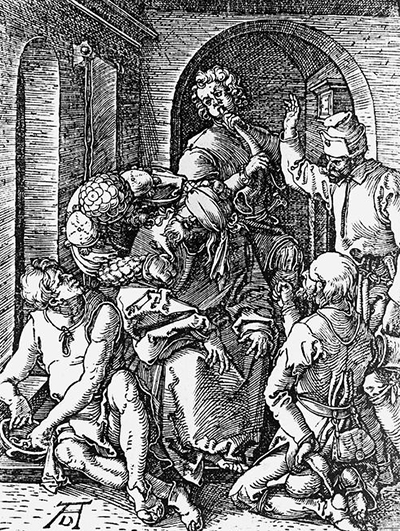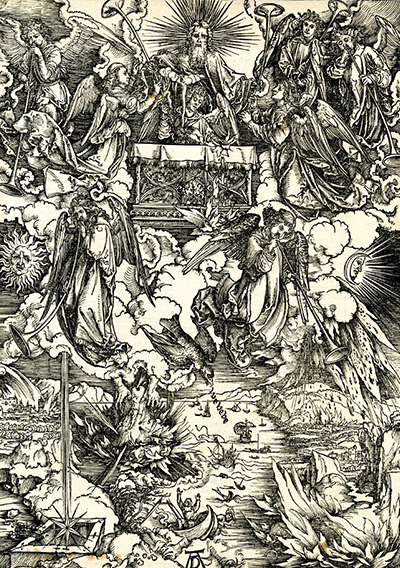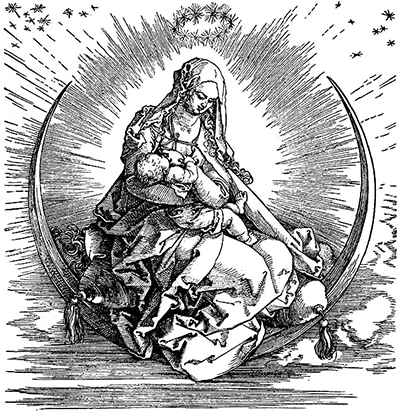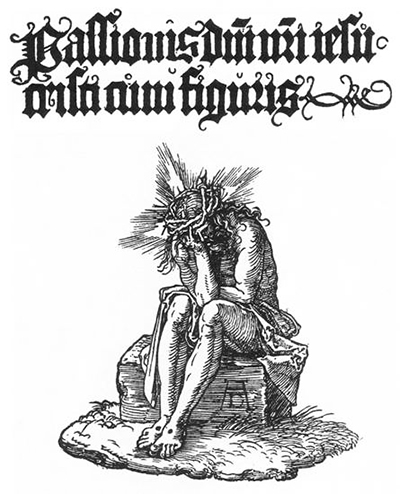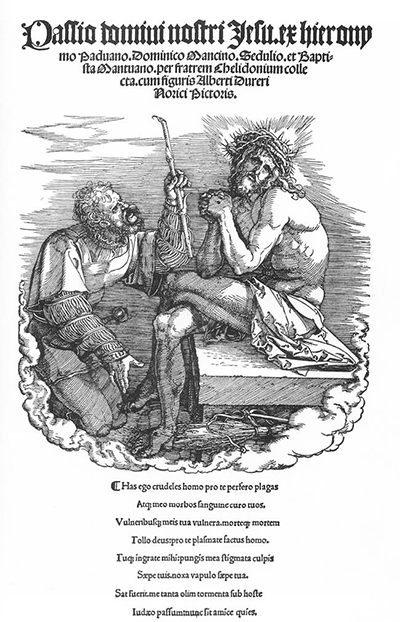Albrecht Durer is best described as an artist who conquered his time
Besides painting and engraving, the Nuremberg-born Albrecht is well identified with woodcuts. His style for woodcut is very distinctive and can't be bettered by anyone. His genius of art and creativity of producing woodcuts reached the highest height during his era. Albrecht's woodcuts are celebrated beyond Germany. Durer has over 300 great woodcuts, and his collections are treasured by art lovers globally.
Some of his famous woodcut projects include the Great Passion, Life of the Virgin, Samson Fighting the Lion, the Apocalypse of St John, the Virgin in Glory, the Last Supper, the Six Knots, the Men's Birth, the Rhinoceros, St. Jerome in his Study, and St. Christopher. Some of these woodcuts have similar paintings by historic artists such as Leonardo da Vinci and Michelangelo.
Most of Durer’s woodcut pieces have a sacred touch. Overall, a majority of his pieces are religiously themed. Works such as the Last Supper, the Virgin in Glory, and the Apocalypse are good examples of Albrecht’s biblical message. He was able to bring out the details of the Old and the New Testament through his pieces. His pieces follow a chronological order of the biblical happenings. This technique makes him unique and different from a number of historic artists. The woodcuts were produced in series depending on the line of events depicted in the Holy Book. The style makes it easy for the art lover to connect the pieces in relation to the documented story.
For example, pieces such as the Lamentation of Christ, the Entombment, and the Resurrection are chronologically linked. Every piece in a particular series highlights a line of events. Using theoretical approach and renaissance art, Albrecht’s technique is related to famous artists such as Da Vinci, Michelangelo, and Raphael. For example, Da Vinci’s art pieces such as the Last Supper, the Annunciation, and the Adoration of Magi have close resemblance with Durer’s woodcuts going by the same names. All these artists share the unique element of Renaissance Art. The pieces emphasize on classism, perceptive, and anatomy, which are key factors in renaissance art.
Looking at the biblical understanding that Albrecht Durer possessed, his woodcuts are depictive of a religious message. The designs of his pieces are linked to a number of historic paintings. Even though he is no more, Albrecht legacy lives on in his famous woodcuts. His work continues to inspire millions and he is celebrated around the globe. On his arrival to Nuremberg sometime in 1495, Dürer opened a particular workshop (being hitched was a necessity for the store to open). Throughout the following five years his style progressively incorporated Italian impacts into basic Northern structures.
Durer's most excellent works during the starting years of the workshop were his woodcut prints, which for the most part were religious, however including mainstream scenes, for example, "The Men's Bath House". These were bigger and more keenly cut than the sizeable watercolour portion of exceptional German cuts, and much more mind-boggling and adjusted in creation. It is presently thought improbable that Dürer cut any of the woodblocks himself; this assignment would have been performed by a pro skilled worker.
Be that as it may, his preparation in Wolgemut's studio, that created many cuts and painted pieces and both outlined and cut woodblocks for the woodcut, apparently gave him incredible comprehension of what the method could be made to develop, and how to work with square cutters. Dürer either drew his plan straightforwardly onto the woodblock itself or stuck a paper attracting to the square. In any case, his illustrations were pulverised amid the cutting of the square.
His well-known series of "sixteen extraordinary designs for the Apocalypse" which was dated 1498, similar to his etching of "St. Michael Fighting the Dragon". He made the initial seven scenes of the Great Passion around the same time. He then went on with a progression of eleven on the "Holy Family" and "saints" holy people. His scenes of a certain period, for example, "Pond in the Woods" and "Willow Mill," are very not entirely the same as his prior watercolours.
They have considerably more prominent accentuation on catching environment, as opposed to portraying geography. He created various Madonnas, to single religious figures, and little scenes with comic labourer figures. Prints are exceptionally convenient, and these specific works made Dürer renowned all through the first creative spots of Europe in a short period. In spite of the respect the Venetians gave them, Dürer came back to Nuremberg in between mid-1507, staying in Germany for many years to come.
His notoriety had spread all through Europe, and he was on well-disposed terms and in correspondence with the vast majority of the most famous art specialists including Raphael, Leonardo da Vinci and also Giovanni Bellini just to name a few. In the vicinity of 1507 and 1511 Dürer chipped away at some of his most praised artistic creations: "Adam and Eve" in 1507, "the altarpiece Assumption of the Virgin in 1509", "The Martyrdom of the Ten Thousand" in 1508, "for Jacob Heller of Frankfurt for Frederick of Saxony)", Virgin with the Iris also in 1508 and "Adoration of the Trinity" in 1511, for Matthaeus Landauer).
Amid this period he additionally finished two woodcut arrangement, the Great Passion and the Life of the Virgin, both distributed in 1511 together with a moment release of the Apocalypse arrangement. The post-Venetian woodcuts demonstrate Dürer's advancement of chiaroscuro displaying effects, making a mid-tone all through the art to which the features and shadows can be differentiated.
A Review of the Top Woodcut Series by Albrecht Durer - Albrecht pieces are covered in 4 series, and they include the Large Passion, the Small Passion, the Apocalypse, and Life of the Virgin.
The Large Passion: The original woodcuts were done by Albrecht between 1497 and 1510. There are a total of 11 pieces in this category, and they all picture the life of Christ, especially his suffering. They include the Last Supper, Christ on Mt. Olive, Christ Taken Captive, Christ Bearing the Cross, the Flagellation, the Crucifixion, the Ecce H@mo, the Entombment, the Lamentation, the Resurrection, and Christ in Limbo.
The Small Passion: The series consists of a total of 36 woodcuts that cover the tribulations of Christ. The pieces demonstrate the challenges that Christ went through in the hands of men before eventually dying and ascending to the heavens. The pieces were produced between 1508 and 1511. They include the Fall, the Annunciation, the Expulsion from Paradise, the Nativity, Christ Taking Leave of His Mother, Christ Driving the Merchants from the Temple, Christ Entry into Jerusalem, Christ Washing Peter’s Feet, Christ Taken Captive, the Mocking of Christ, Pilate Washing his Hands, Christ Bearing the Cross, the Descent from the Cross, Christ Shown to the People, Christ being Crown with Thorns, Christ before Caiaphas, Christ before Herod, Christ before Pilate among others.
The Apocalypse with Pictures: The series was released between 1497 and 1498. The Apocalypse depicts the faith of early Christians. The woodcuts describe the imminent coming of Christ as described in the Holy Book. The pieces reveal what the prophets foretold about Christ. There are a total of 15 woodcuts of the series, and they all borrow a lot from the book of Revelation. They include the Wh@re of Babylon, the Angel with the Key of the Bottomless Pit, the Beast with Seven Heads, St. Michael Fighting the Dragon, the Woman of the Apocalypse, St. John Eating the Book, the Four Angels of Death, the Opening of the Seven Seals, the Hymn in Adoration of the Lamb, Four Angels Holding Back the Winds, the Opening of the Fifth and Sixth Seal, the Four horsemen of the Apocalypse, St. John Kneeling Before Christ, the Martyrdom of St. John, and St. John’s Vision of the Seven Candle Sticks.
Life of the Virgin: This series encompasses woodcuts done by Albrecht between 1502 and 1511. The pieces describe the story of the Virgin, Christ, and Joachim as depicted in the Bible. There are a total of 19 woodcuts designs done by Albrecht. They include the Angel Appearing to Joachim, the Refusal of Joachim’s Offer, the Meeting of Joachim and Anne at the Golden Gate, the Presentation of the Virgin in the Temple, the Birth of the Virgin, the Marriage of the Virgin, the Adoration of the Shepherds, the Visitation, the Circumcision of Christ, the Flight into Egypt, Rest of the Flight into Egypt, Christ Among the Doctors, the Death of Mary, Coronation of the Virgin, the Virgin Worshipped among others.



